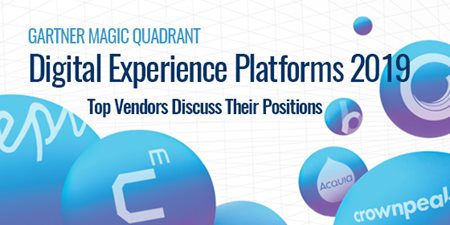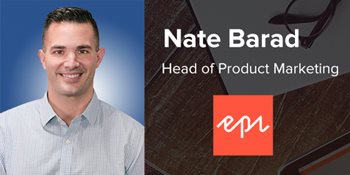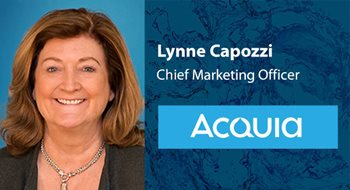Gartner Magic Quadrant for DXP 2019: Defining a New Market
By Laura Myers
February 28, 2019
Acquia, BloomReach, CoreMedia, CrownPeak, Digital Experience, Digital Experience Cloud, Digital Experience Market, Digital Strategy, Episerver, gartner, MQ, sitecore
It’s been a while since the digital world saw a new market begin to form before their very eyes. Still, when it comes to the landscape of digital experience platforms, that is precisely what is happening. I am not going to reach for the adage of saying it’s ‘the Wild West’ out there, though. The vendors who make up this new market have a far too long history of successfully navigating the content management landscape to be that cavalier in their approach. Instead, the breaking of fresh ground has incited a variation on the types of creativity each vendor brings forward in addressing the digital experience needs as they see them, and orchestrating the dance of interoperability and integration between adjacent technologies.
it comes to the landscape of digital experience platforms, that is precisely what is happening. I am not going to reach for the adage of saying it’s ‘the Wild West’ out there, though. The vendors who make up this new market have a far too long history of successfully navigating the content management landscape to be that cavalier in their approach. Instead, the breaking of fresh ground has incited a variation on the types of creativity each vendor brings forward in addressing the digital experience needs as they see them, and orchestrating the dance of interoperability and integration between adjacent technologies.
Now in its second year, the Gartner Magic Quadrant for Digital Experience Platforms 2019 takes a more in-depth look at the strategy and execution of seventeen vendors deemed to be at the top of the digital experience game and rate them based on both their ‘completeness of vision’ and ‘ability to execute’. In Gartner fashion, each vendor in the report is identified with three strengths and three cautions which provides a way for decision-makers in the market for this technology to decide who the better fit is. Within this article, I speak with six of these vendors: Coremedia, BloomReach, Episerver, Acquia, Crownpeak, and Sitecore to hear their comments on their ranking. Additionally, their observations will lend to augment the purpose of this report; defining what the digital experience market truly means.
In my time at CMSC Media, I have heard comments from all sides of on this. From the ones who said it would absolutely, in time, eliminate the content management market, to those who said the two could exist in tandem. There were even a few people who, early on, felt it was just another buzzword for a group of capabilities that would never actually take hold as its own market. At any rate, as the need for highly contextualized digital experiences become the basic expectation of customers, and the modalities and channels within the customer journey increase in number, the digital experience platform’s power as a ‘centre of gravity’, as defined by Gartner, will be proven again and again.
CoreMedia
One of the notable strengths for CoreMedia that Gartner highlighted in the report was their move to CoreMedia Content Cloud. Gartner sees this shift as an indication of a high level of maturity when it comes to the product, as well as how CoreMedia understands the needs of the market. Knowing nearly every DXP vendor wants to have an accurate grasp on what lays beyond the horizon of the digital experience market, I asked Sören Stamer, CEO & Co-Founder at CoreMedia, to let me know what cues he took from the market as inspiration for this strategic shift by his company?
“Content Management has been our bread and butter for many years, and we’ve learned a lot about  content and omnichannel publishing from media and telecommunications companies. But when we strategized about the future of content management a few years back, we identified a different kind of customer as trailblazers: luxury brands. Convincing a customer to spend tens of thousands of dollars with one swipe on their iPhone requires a level of sophistication in customer experience that is unique.
content and omnichannel publishing from media and telecommunications companies. But when we strategized about the future of content management a few years back, we identified a different kind of customer as trailblazers: luxury brands. Convincing a customer to spend tens of thousands of dollars with one swipe on their iPhone requires a level of sophistication in customer experience that is unique.
It turns out that luxury brands have five important characteristics:
- They need to be iconic to stand out.
- They need to be consistent and flawless at global scale.
- They need to be agile and excite every single time.
- They need to master highly personalized experiences.
- They need to integrate physical flagship stores and digital content seamlessly.
Overall, luxury brands taught us one truth that is applicable everywhere: It’s all about the experience. In any vertical, if you provide a poor or average customer experience someone else will come and disrupt your business by creating a superior experience. We’ve seen it happening many times in all verticals, in retail, in fashion, in eyewear, in banking, etc.
As a result, all the things we’ve learned from and with luxury brands about creating and orchestrating iconic brand experiences at global scale turned out to be highly valuable for all other verticals as well. Increasingly, it’s all about the experience in travel, banking, manufacturing, B2B, media and even public services.
CoreMedia Content Cloud is our answer to these fundamental trends. It’s been created to empower brands in every vertical. It’s designed to create and orchestrate true omnichannel experiences at global scale by taking all the pain away from managing 20+ languages and 100+ countries.
CoreMedia Content Cloud stands out by empowering four different user groups at the same time: marketers, merchandisers, designers, and developers. Developers are empowered with powerful APIs and headless content-as-a-service. Designers are empowered to create, test and roll out new designs instantly and at a global scale. Merchandisers are empowered to work closely aligned with marketers. And marketers are empowered to create content and orchestrate iconic experiences at a global scale with a few clicks without being held back by the other roles.
We’ve seen the cost of content creation being reduced by more than 98%. We’ve seen the time to market being reduced by 99%. And we’ve seen the time to update global experiencers be reduced from weeks, to days, to minutes.
Empowering marketers to create more iconic content at a faster rate is a prerequisite for many other initiatives. You can’t personalize experiences in a meaningful way if you don’t have the relevant content in the right language and combination in the first place. You can do A/B testing without good content. You can’t deliver exciting drops or experiential commerce without great content. More and better content that is relevant and fresh is mission-critical.
And so is speed. With CoreMedia Content Cloud we massively reduced the time to value for our customers. For example, we enable Salesforce customers to be up and running with a sandbox in one day. They can start creating content, testing designed and preparing the relaunch of their online flagship stores immediately.
Brands compete through superior customer experience. But since that is a moving target, brands also compete through the ability to iterate and learn faster. Therefore, agility is so crucial.
Looking into the future, we expect to see escalating customer expectations. What could be done in weeks has to be done in days and then in hours. What had to be consistent across two or three touchpoints now has to be flawless across 20 or 30. Physical stores will get all the capabilities of digital stores like personalization, A/B testing, dynamic pricing, endless aisles, flash sales, gamification, video, voice interaction, tracking, analytics, etc.
We are excited about the possibilities for CoreMedia Content Cloud in such scenarios. It might have started as a CMS but it turns into something new, we might want to call brand orchestration platform. Our vision is empowering brand managers in a way never seen before. We want to put all brand experiences globally at their fingertips.”
As Sören said above, a lot of what they have learned about digital experience throughout their history as a content management company came from media and telecommunications companies. It's not a bad place to cut your teeth, so to speak, as it could be argued on some level that companies in every vertical market are required to become some form of an underlying media company, regardless of their business model. The pressure to provide a rich digital experience driven by a strong effort towards multimedia content is too high. But even if, as Sören mentioned, the digitally adventurous nature of luxury brands has drawn them in as a new market to target, Gartner cautions that this more precise focus in markets could limit the examples and best practice information customers could find if they’re outside of the markets CoreMedia where has a storied history. I asked Sören what he thought of this comment by Gartner, and to elaborate a little more on why the market of commerce-driven luxury retailers has captivated their attention at this point.
“I wasn’t really surprised reading this in the Gartner report because of our strong momentum with luxury brands and retail. (We managed to become the hidden champion for luxury retail platforms.) As described above, we identified luxury brands as the trailblazers for the future of content and experience management.
Nonetheless, Gartner missed a crucial fact: It’s all about the experience, regardless if you a luxury brand or not.
Truth is I don’t see a single thing that we learned from luxury brands and put into CoreMedia Content Cloud that hasn’t been of great value to our customers in other verticals. Quite the opposite, our strong and growing customer base in finance, insurances, travel, manufacturing, media, telco, public services is testament for the success of our strategy.
Finnair is a good example. They selected CoreMedia Content Cloud to implement a fascinating omnichannel strategy along the whole customer journey pre-flight, in-flight and post-flight. Instead of integrating with a commerce engine Finnair integrated Content Cloud with the booking platform, Amadeus, to create delightful, personalized experiences.
Another one is Emerson. They are using CoreMedia Content Cloud to integrate all of their business units and brands into one platform while systematically improving the quality and depth of their B2B customer experiences.
Even the German Armed Forces selected CoreMedia Content Cloud to consolidate 60 portals and create modern, personalized experiences for the public.
I am deeply convinced that B2C and B2B brands in all verticals, who haven’t seen CoreMedia Content Cloud live yet, will be delighted when they take a look and realize how game-changing our capabilities could be for them. I’m willing to take a bet that not a single marketing executives will regret taking the time to see a live demo. So far, we’ve been able to amaze 100% of them.”
BloomReach
BloomReach is another vendor Gartner points out as being openly influenced by market demands, although it is the way their product strategy is driven mainly by the market demands their customer’s face that’s the difference. BloomReach’s flexible and versatile architecture is emphasized as a strength in how it allows for its users to respond quickly to the needs they are faced to meet, and their “headless experience delivery via CaaS and SPAs” are two prominent examples of this. I asked John Field, Director of Product Marketing at BloomReach, what some of the market demands are that they have their sights set on tackling this upcoming year?
“BloomReach continues to mature our CaaS and SPA support through the year, we were fast (perhaps  even first) to respond to the market demand from our active Community and our versatile architecture as noted by Gartner. We recently presented our roadmap to a record audience of Customers and Partners who will be leveraging our continued investment in CaaS and SPA support, along with increased flexibility and guidance in Cloud deployment on brCloud and Customer Cloud. Our core themes are More Control, More Flexibility, More Support, More Efficiency, and More Personalization.”
even first) to respond to the market demand from our active Community and our versatile architecture as noted by Gartner. We recently presented our roadmap to a record audience of Customers and Partners who will be leveraging our continued investment in CaaS and SPA support, along with increased flexibility and guidance in Cloud deployment on brCloud and Customer Cloud. Our core themes are More Control, More Flexibility, More Support, More Efficiency, and More Personalization.”
When it comes to a new market, it can be the best of times, and it can be the worst of times. It can be the best because, given its newness, many of the players are rapidly innovating and rolling out capabilities to match-step with their competitors or carve a new path in terms of how things can be done. The problem with this, however, is these items are not always rolled out in time for consideration in the report, and in the case of BloomReach, a recent rollout directly addressed a caution listed by Gartner. The report comments on the pace of the integration between BloomReach and Hippo (their 2016 acquisition) into a cohesive digital experience platform, and highlights gaps in areas like AI/ML driven personalization, cloud capability, and UIs. My second question for John focused on this, and asked what steps they were taking—or have they recently taken—in addressing this?
“As with all analyst reports, there was a hard cut-off date for Generally Available software which meant that much of the improvements we made with the launch of v13 in January were not considered and do in fact take a leap to answering this caution. OpenUI is not just for external applications to be present in the context of the brXM User Interface but also for our own products. We now have a Unified UI for our products. We also enabled the configuration of our Pixel and Content Search feed into our AI Search, rather than being a development task. Next on deck is to unify the results set for content and product search. We also announced improvements to brCloud after the cut-off which provide greater PaaS flexibility than our previous iteration, which had been available for many years before some of the other vendors in this MQ.”
Episerver
Another juicy conversation in the DXP world, given its high prevalence of technology integration, is whether it’s better for a platform to be ‘home-grown’ or built through acquisition? The same could be asked for whether sports teams should be created by collecting the best players and hoping for victory or orchestrating and nurturing a winning team from the draft level? Unfortunately, for those who could debate this for days in either area, it’s the unseen element of intangible chemistry that refutes a steadfast argument for either side.
This concept serves as the basis for Gartner’s comment on a strength of Episerver. “Given that it has grown by acquisition”, the Episerver Digital Experience Cloud is noted as having a well-integrated set of capabilities that positions it as a platform well-suited for advanced digital experience use cases, especially those that have requirements for personalization and commerce in both B2C and B2B. I asked Nate Barad, the new Head of Product Marketing at Episerver, what it is about these capabilities that make the platform so adept at accelerating the digital experience capabilities of its users?
“Gartner’s recognition of Episerver Digital Experience Cloud’s suitability in complex digital experience  scenarios highlights the efforts of our teams on user experience and a respect that our user’s role is vital to serving their customer. If the business user cannot make sense of their applications, end consumers will suffer. Being a modern application created for modern scenarios, a person using Episerver is more comfortable and therefore more confident to do more with the product and the experiences being created. These business scenarios can be a challenge, such as personalizing in multiple channels or merchandising a sophisticated catalogue, and Episerver’s answer has been to create a product that simplifies their task while providing the right guidance. The interfaces augment human intuition, using AI and analytics to justify a decision. Much of the personalization can be automated such as long tail and the remarkable capabilities of individualized content. The result is a user experience that a marketer or merchandiser wants to do more with, such as introducing personalization not just on the homepage but also across the experience like in search or on product pages. Business users can feel more confident in the decision she is making when the data and trends justify it as well as present best next steps. There are differing levels of digital agility with each client, and they all want to improve to that next stage. We love to build their digital experience with that challenge in mind.”
scenarios highlights the efforts of our teams on user experience and a respect that our user’s role is vital to serving their customer. If the business user cannot make sense of their applications, end consumers will suffer. Being a modern application created for modern scenarios, a person using Episerver is more comfortable and therefore more confident to do more with the product and the experiences being created. These business scenarios can be a challenge, such as personalizing in multiple channels or merchandising a sophisticated catalogue, and Episerver’s answer has been to create a product that simplifies their task while providing the right guidance. The interfaces augment human intuition, using AI and analytics to justify a decision. Much of the personalization can be automated such as long tail and the remarkable capabilities of individualized content. The result is a user experience that a marketer or merchandiser wants to do more with, such as introducing personalization not just on the homepage but also across the experience like in search or on product pages. Business users can feel more confident in the decision she is making when the data and trends justify it as well as present best next steps. There are differing levels of digital agility with each client, and they all want to improve to that next stage. We love to build their digital experience with that challenge in mind.”
Taking a critical stance on timing, Gartner lists the transition Episerver is currently going through as a caution of the platform for prospective customers. Due to their transition from “on-premises and cloud-based, hybrid PaaS/SaaS architecture to a full SaaS product”, those who use the platform may experience some “growing pains” given the complexity this requires from an architectural standpoint. Seeing as this change is quite a signifcant undertaking, I wanted to know the motivation behind this transition and what benefits, they at Episerver, feel lay on the other side for their customers?
“The progression to a full SaaS product is keeping ahead of our clients’ needs, which are driven by many factors. As our clients grow their businesses (and mature, digitally), they become more geographically diverse and internationally present. Their digital properties are often the first and most prevalent channels of communication. The improved effectiveness of time to value and ongoing performance drives much of these decisions for our clients. The benefits provided by offering multiple as-a-Service architectures provide options that meet our customers’ diverse needs. In all sectors, the constantly connected customer is communicating from a variety of locations, devices and times of day. In most cases, it is also cost efficient to appropriate the costs according to each client’s needs, and this provides a means to deliver that. Clients will be able to monitor their applications better for security and operate confidently that their customers’ data is private. Ultimately, our clients can expand their reach or launch new projects faster and monitor their security and spend more efficiently.”
Acquia
Given the sometimes complex nature of digital experience platform deployment, customers tend to have a higher than average reliance on partner agencies to not only get their platform up and running but to ensure they are optimizing it the best way they can to achieve a full ROI. As a prominent strength of Acquia, Gartner acknowledges the deep investment in their partner ecosystem, allowing customers a variety of choices when it comes to expertise in a particular market or availability based on region. I asked Tom Richardson, VP, Strategic Partnerships at Acquia, what is it they look for in a partner, and what are some areas they want to expand on even further when it comes to expertise and proven ability offered by their partners?
“Acquia is actively recruiting partners, and enabling existing partners, to support our goal of  maximizing customers’ existing investment in marketing technology. Acquia’s Partner and Certification Programs were originally built on Drupal expertise. However, successful implementations of Acquia Lift and Journey require an additional skill-set beyond Drupal development. As such, the new generation of partners will be skilled in strategy, systems integration, API development, user journey mapping, and personalization. We are also recruiting and enabling partners who have a particular interest in developing joint solutions with Acquia, based on third-party integrations.”
maximizing customers’ existing investment in marketing technology. Acquia’s Partner and Certification Programs were originally built on Drupal expertise. However, successful implementations of Acquia Lift and Journey require an additional skill-set beyond Drupal development. As such, the new generation of partners will be skilled in strategy, systems integration, API development, user journey mapping, and personalization. We are also recruiting and enabling partners who have a particular interest in developing joint solutions with Acquia, based on third-party integrations.”
Aside from the partner ecosystem—and even though they’re listed as a Challenger in the report—Gartner cautions that Acquia’s marketing strategy and execution in relation to their DXP offering is lagging compared to the competition, especially in consideration of its “value-added differentiators” from its well-known open-source Drupal foundation. In relation to the customer side, this may obfuscate the ways Acquia brings value to their digital experience strategies. I was able to speak again with Lynne Capozzi, Chief Marketing Officer at Acquia, to ask how she is incorporating a DXP strategy and execution with the Drupal WCM foundation.
“Open source DX platforms allow users to continue their customer-centric focus, constructing their DXP in the manner they see fit from top software across vendors. At Acquia, we focus on helping global brands make the most of their tech investments with a commitment to openness. Our approach adds value to existing customer investments by leveraging content as a critical core capability and extends the competitive value of content with personalization, customer orchestration, governance, security, and scale. We’re helping companies get the most out of their existing investments with a best-of-breed approach that delivers value beyond on our core competency, and how we believe we can help maximize our customers’ differentiation - and that’s built on connecting content with audiences.”
in the manner they see fit from top software across vendors. At Acquia, we focus on helping global brands make the most of their tech investments with a commitment to openness. Our approach adds value to existing customer investments by leveraging content as a critical core capability and extends the competitive value of content with personalization, customer orchestration, governance, security, and scale. We’re helping companies get the most out of their existing investments with a best-of-breed approach that delivers value beyond on our core competency, and how we believe we can help maximize our customers’ differentiation - and that’s built on connecting content with audiences.”
Crownpeak
As we’ve discussed on CMSC Media before, Crownpeak is well-known for its strength as a SaaS platform, which arguably comes from the fact they’ve never been anything else. The notable advantage here is that SaaS can ease the burden of complexity many organizations face as they strive to deliver an impactful experience for their customers due to its ease of integration with other third-party services that round out the collective digital experience technology strategy. In the report, Gartner recognizes Crownpeak as one of the only authentic SaaS vendors in the DXP market, so I was excited to hear from Ian Lowe, VP of Marketing at Crownpeak, to find out how they feel about this commendation.
“We feel great about the recognition because indeed, Crownpeak is the only cloud-native, SaaS player in this market. Our competitors come from a pre-cloud, legacy of software installed on servers. Although they all claim to be cloud, they’re really just installing software on servers in Microsoft’s or Amazon’s cloud. At Crownpeak, on the other hand, we’ve been true SaaS since our inception. This means no upgrades, just new capabilities delivered continuously throughout the year, and the fastest time to market of our peer set. Today’s Digital Experience professionals are looking to deliver to their audiences wherever they are at the speed of the internet. Our decoupled, serverless architecture lets them do just that: deliver messages and experiences that matter to any web, mobile, IoT or other device, at scale, with security, compliance & privacy, faster than they ever have before.”
this market. Our competitors come from a pre-cloud, legacy of software installed on servers. Although they all claim to be cloud, they’re really just installing software on servers in Microsoft’s or Amazon’s cloud. At Crownpeak, on the other hand, we’ve been true SaaS since our inception. This means no upgrades, just new capabilities delivered continuously throughout the year, and the fastest time to market of our peer set. Today’s Digital Experience professionals are looking to deliver to their audiences wherever they are at the speed of the internet. Our decoupled, serverless architecture lets them do just that: deliver messages and experiences that matter to any web, mobile, IoT or other device, at scale, with security, compliance & privacy, faster than they ever have before.”
Interestingly, Gartner pointed to some organizational factors as a caution for Crownpeak. In the last year, we've seen some changes happen within the executive suite, but Gartner also focused on the amount of internal organizational changes that have taken place. I asked Ian if he could provide some insight into why these changes came about, and how it will impact the company in the future?
“It’s a reasonable thing for Gartner to caution about, but in our case, it was driven from a change in company direction. Crownpeak’s board make the strategic decision to heavily invest in the business and to re-engineer our leadership team to take advantage of this unique opportunity in the market and seek explosive growth. We’ve brought in seasoned experts in Customer Success (Craig Solberg, who hails from SaaS darling, Ariba, and is delivering best-in-class retention rates), Product and Strategy (Darren Guarnaccia, with a proven track record in CMS and DX across 15 years at RedDot and Sitecore) and led by Ravi Kumaraswami an almost thirty-year veteran in the tech space including a great exit at Lithium. I can tell you as the new kid in the Crownpeak executive team, that this group is focused, has its finger on the pulse of the market and is primed to deliver great innovations and growth.”
Sitecore
You’d have to be living with your head under a rock for the past couple years if you’ve missed the excitement over headless technology. If you have, and you venture out to search for technology to support your digital experience needs, it might be advisable to then leave your head behind. The benefits of a headless or head-optional approach are proclaimed at every turn when it comes to digital experience technology. Among other attributes, it offers a quick adaptation to the dynamic nature of the experience layer and a new kind of process efficiency from the separation between the backend development and front-end experience delivery. This all makes Gartner’s commendation of Sitecore on their continued innovation around this headless/head-optional approach to the delivery of experience significant. I brought this up with Mark Demeny, Director of Product Strategy at Sitecore, to hear more about these advancements on their part.
“We’ve really enjoyed the “headless CMS” conversation that has been happening over the past couple  years. Very early on, Sitecore understood that digital experiences would expand far beyond the boundaries of a traditional website, so we’ve always had a strong story around multi-channel reuse of content. From the start, Sitecore has been an item-based CMS with full separation of content and presentation. We store individual items of content that can be called via our API to be reused for display on any device, allowing true write-once-and-distribute-anywhere capability. And going all the way back to 2015 and the release of Sitecore 7.5, the Sitecore Services Client provided a services API layer that enabled users to deploy content heedlessly and enrich a variety of channels—from JavaScript applications to mobile applications to any IoT-connected device. However, delivering content headlessly in this way doesn’t support the delivery of personalized content. Your content may live on an IoT-connected device, but you can’t receive data about how users are interacting or push out personalized content just for individual needs. And this is precisely the challenge that plagues all of our competitors today.
years. Very early on, Sitecore understood that digital experiences would expand far beyond the boundaries of a traditional website, so we’ve always had a strong story around multi-channel reuse of content. From the start, Sitecore has been an item-based CMS with full separation of content and presentation. We store individual items of content that can be called via our API to be reused for display on any device, allowing true write-once-and-distribute-anywhere capability. And going all the way back to 2015 and the release of Sitecore 7.5, the Sitecore Services Client provided a services API layer that enabled users to deploy content heedlessly and enrich a variety of channels—from JavaScript applications to mobile applications to any IoT-connected device. However, delivering content headlessly in this way doesn’t support the delivery of personalized content. Your content may live on an IoT-connected device, but you can’t receive data about how users are interacting or push out personalized content just for individual needs. And this is precisely the challenge that plagues all of our competitors today.
We crossed this hurdle with the general availability of Sitecore JavaScript Services (JSS), which really advances the concept of what it means to deliver personalized content in a headless environment. Sitecore JSS provides a complete SDK for JavaScript developers that allows them to build full-fledged headless solutions—with full support for tracking, optimization, personalization, and preview—using Sitecore and modern JavaScript UI libraries and frameworks such as GraphQL. You can even start front-end development completely outside of Sitecore and consume the application into the CMS and immediately start managing your content including using WYSIWYG editing that allows the marketer to see what the experience will look like for the visitor. JSS will also allow the marketer to personalize the experience as they would with any other Sitecore site.
As a result, JSS reaches an entirely new set of developers and agencies over-and-above our traditional .NET base. Going forward, many of the core functions in other aspects of the platform will be ported to work with JSS, so things like site management and usability are used consistently across the platform, no matter what your front-end approach. For example, the next release will provide JSS support for Sitecore Forms and many of the multi-site management features from Sitecore Experience Accelerator.
As Gartner noted, though, the conversation has started to move beyond headless versus not-headless. The preferred approach is “headless optional”— at least where the core architecture can support it—because not every team or application within an organization requires the same approach. That is why we are working hard on APIs and overall usability and developer tooling to offer both an API-first approach that also delivers key elements to an enterprise CMS such as in-context editing, workflow, and validation. Of course, I would say that it is easier to add APIs and front-end frameworks on top of a flexible digital experience platform that was always designed for this type of extensibility, than vice-versa.”
Even though Sitecore has held steady as a Leader in the Magic Quadrant for DXP (meaning they’ve achieved a high ranking in both their ability to conceptualize and act on the needs of the market), as a caution, Gartner notes that they still exhibit a difficulty for casual business users of Sitecore’s UI. This could result in its use being more taxing on a team’s digital capacity and resources, which most often means that more training would be needed; an unforeseen cost when businesses are allocating their budget for a platform. I was interested to hear Mark’s thoughts on this.
“One of the defining characteristics of a DXP is that it isn’t just a collection of applications but, rather, a cohesive technology architecture that supports the delivery of a great user experience. We believe Sitecore holds a Leader position in the Gartner DXP MQ in large part because our leading web content management platform—an anchor tenant for a DXP—is natively integrated with analytics, personalization, machine learning, omnichannel delivery, and a central repository of real-time, multichannel customer experience data. The resulting connectedness of content, customer information, and delivery capability gives organizations an enormous ability to achieve the ultimate goal of providing better customer experiences, and we’ve made significant effort to make that collection of capability easy to use for even casual business users.
Within DXP and WCM there is always a tension between standards and flexibility, or centralized control vs. decentralized publishing. Often customers fall into a trap of simple, departmental solutions which solve that immediate problem well, but then run into a wall where a more full-featured DXP would serve their needs better. This would include elements of things such as brand consistency, workflow, validation and content reuse across regions and teams. That doesn’t mean there isn’t room for improvement, though, and Sitecore is currently undertaking a substantial investment to revolutionize our user experience across the platform. Customers deserve to get both simplicity and powerful capability, and there’s no reason those things have to be mutually exclusive. For example, our recent acquisition of Stylelabs will have a significant impact on the overall ease-of-use of the Sitecore platform with the delivery of a first-class set of tools to effortlessly manage the entire process of creating and collaborating on content, assets, and product master data to satisfy the needs of an entire enterprise. We’re also harnessing the power of machine learning to triangulate insights between customer behavior and content effectiveness to further optimize content spend and customer lifetime value. And all of this will be accessed through our next-generation UI, known currently as “Horizon,” which fundamentally changes the way marketers design digital experiences by offering a creative and intuitive interface that makes real-time, contextual insights available just one click away. As an example in practice, as a user adds components to a website, the system will ask they user what they want to do next and prompt them to run tests to optimize the experience. In this way, we’re not only dramatically simplifying the Sitecore interface to relieve productivity constraints; we’re also putting even more power in the hands of our customers by enabling a truly data-driven approach to experience development.”

Laura Myers
A digital business, marketing and social media enthusiast, Laura thrives on asking unique, insightful questions to ignite conversation. At an event or remotely, she enjoys any opportunity to connect with like-minded people in the industry.